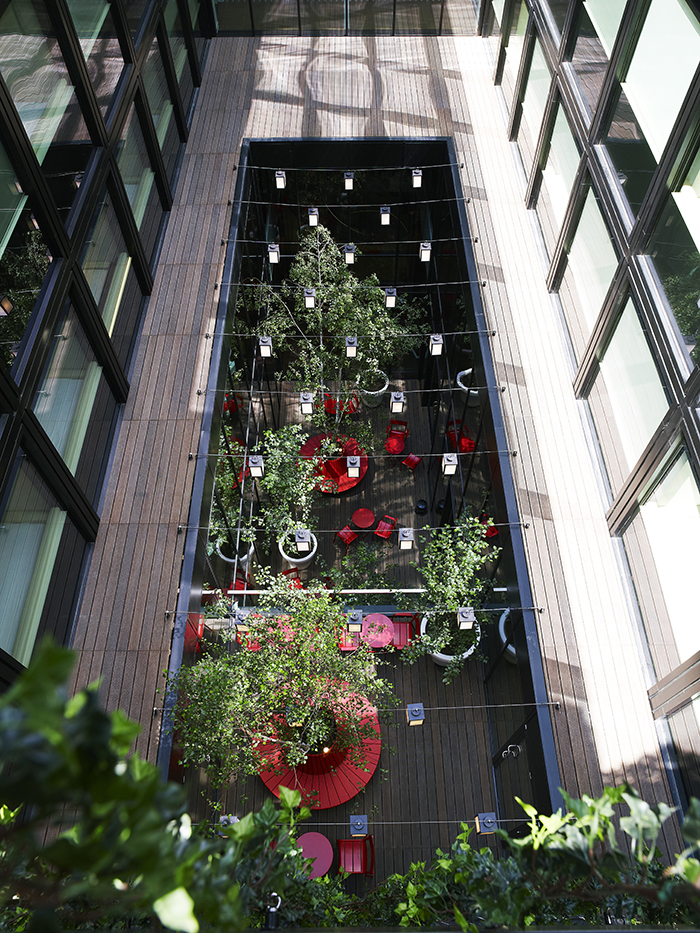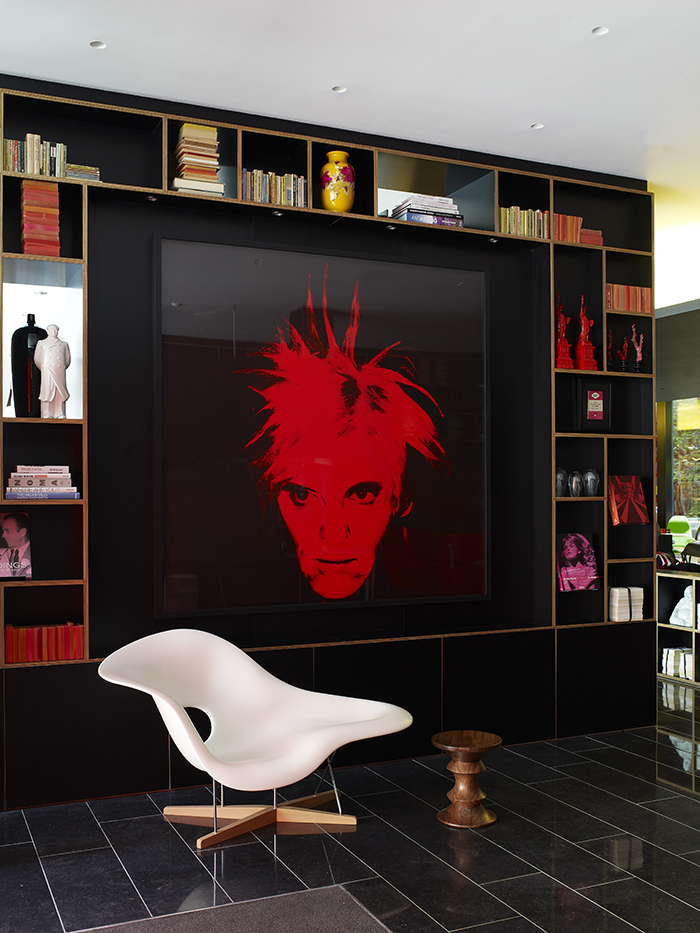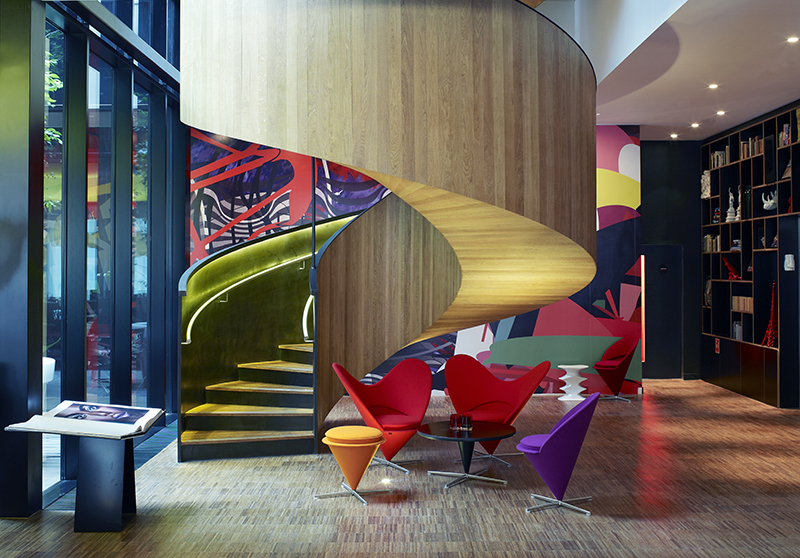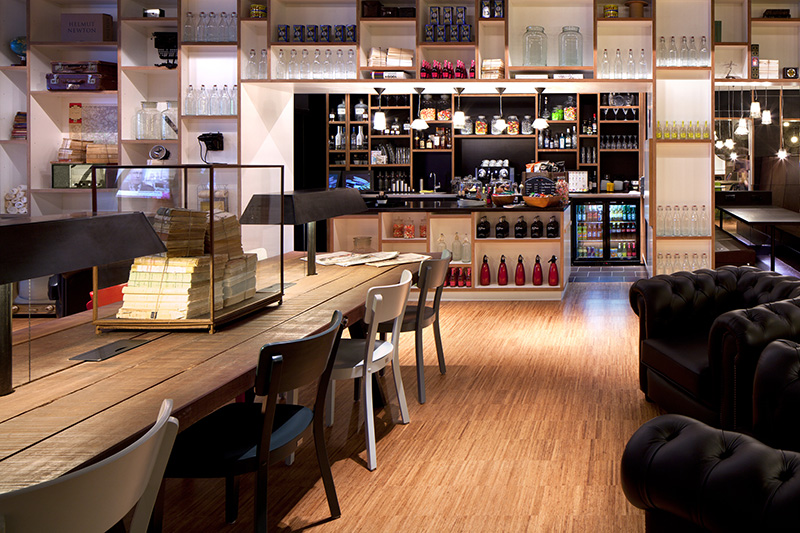The Hospitality Transition
“Transition” is the current buzz word in commercial interiors, the way space is designed and consumed is being influenced by the transformation in the way we work, travel and relax. Design Insider take a closer look at “transitional spaces” and the factors influencing this shift.
In architectural terms “transitional spaces” are defined as spaces located in-between outdoor and indoor environments, acting as both buffer spaces and physical links, the most common being the hotel lobby which also happens to be going through the most significant change. Traditionally, these spaces have not generated income, as they worked only as a functional space leading from one area to another. Today, lobby areas are transformed into places to work, meet friends and relax. DI investigates the convergence between hospitality, residential, retail and office design. Getting the balance right is key, so we caught up with design and architectural practice concrete and hotel group citizenM to see how they’ve achieved it.
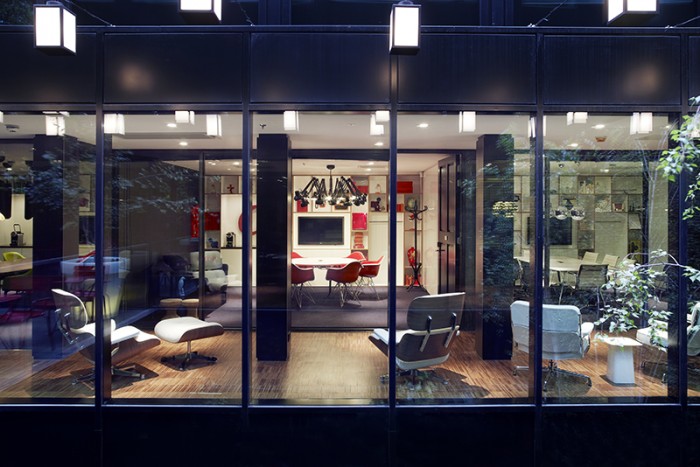
CMO at citizenM, Robin Chadha explains their approach, “our lobby areas are designed to work as a friendly communal hub, in London Bankside for example this space is styled to look like the living rooms of a very well-travelled person”. There is a sharp focus on contemporary art (the hotel is, after all, just south of the Tate Modern), with a text piece rightfully claiming “Another World Is Possible” by Turner prize-nominated artist Mark Titchner mounted on the exterior façade. Another highlight on the ground floor is the self-serve canteenM, which beckons to the hungry and thirsty. “We looked at where people spend their time,” explains Robin. “Do you spend time in the bedroom? No, it’s always the living room – and, even more, the kitchen.” Bankside’s canteenM was designed to feel like a home kitchen arranged around a red wooden coffee bar (which morphs into a cocktail bar as the day wears on), along with an adjacent bakery-style open kitchen with fare that shifts from delicious baked goods in the morning to light lunch and simple dinners later in the day. Guests can grab a variety of food and drinks, then work at one of the four Macs near the kitchen or hang out at a marble-topped table in the cafe. All of this is situated around a dramatic new interior space. The lively hotel is built around an atrium whose tranquil atmosphere offers an urban oasis for guests and visitors; birch trees add a flash of green, hanging lanterns offer soft and magical light, and AVAF’s 35-meter mural, with its eye-popping shapes, frames the space. A wooden deck extends into this peaceful outdoor space from the first floor.
Concrete has been involved with citizenM from the beginning and see the concept evolving as they open more hotels. Describing the new consumer demographic, Erikjan Vermeulen, head of architecture and partner says, “work and life is blurred as we become more mobile. Much is done outside a conventional office, when and where we work varies. Public spaces provide the social heart – areas to work and play. So we designed a mix of high and low seating, intimate nooks and open spaces”. London Bankside was the first to incorporate an outdoor space in its core. Because of its success, citizenM tries to implement an outdoor space (which behaves as an outdoor living room) into each new citizenM. “Our aim is to keep the brand vital and ever evolving to the latest needs of the mobile citizen” explains Erikjan.
“work and life is blurred as we become more mobile. Much is done outside a conventional office, when and where we work varies. Public spaces provide the social heart – areas to work and play”
This fresh thinking in hospitality has influenced the residential sector too, in one of concrete’s new projects, smart space apartments are placed next to highly communal areas which draw the public in. Even within the commercial area Erikjan sees a greater connection between public and private life. “We look at transitions and fill the spaces in between, creating value in places to meet and work. Zoku is our latest concept, located in Amsterdam for those who want more than a three-night stay but don’t want to rent a furnished apartment or stay in a hotel. So we blur a hotel room, with a studio apartment and office space – in the middle we place a table”. The 125 units will have communal spaces where residents can socialise and even cook together. It is this human connection that concrete harness so well that makes them so much more than an architectural design practice, “we make things both beautiful and sustainable. Design that lasts, that looks good and does good” explains Erikjan.
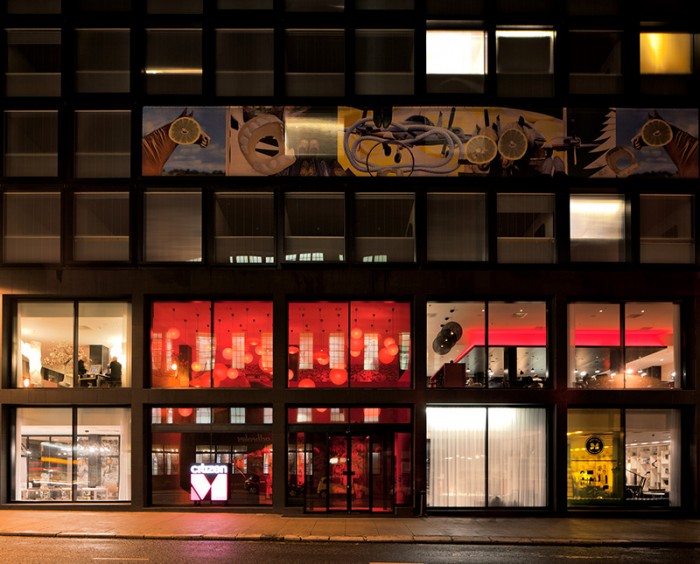
One trend that DI has seen across hospitality is brands becoming more connected with their locality. We see this at citizenM too, whilst their brand DNA is present in all properties they also embrace local cultures and tastes. Whether it’s local produce or celebrating local artists such as Glaswegian artist Alex Dordoy, whose surrealist oversize mesh artwork graces Glasgow hotel’s outside façade. Guests enter the hotel through an illuminated, double-height glazed red entrance leading to the first floor via a striking red spiral staircase. Upstairs, the lobby immediately puts guests at ease, with its’ long bar and relaxed lounge area that also attracts locals. Guests can relax, socialise or work – on the menu are local favourites like haggis and Irn-Bru.
The biggest difference at citizenM is the way public spaces are designed and used. The “transition” is that guests spend less time in their room and more time in public spaces, achieved because those spaces are designed for multi-use in an easy and relaxed style.
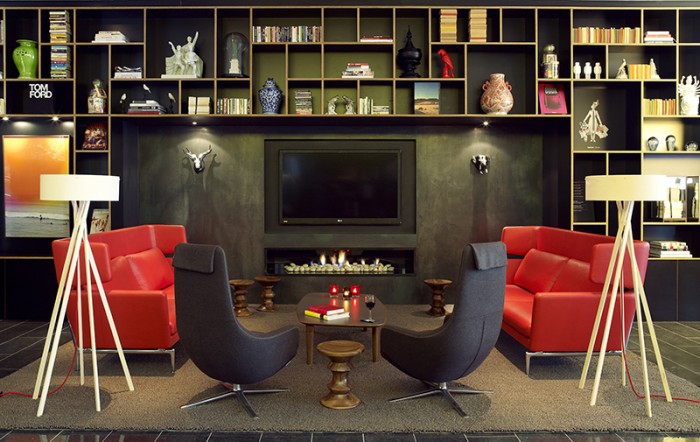
With hotels increasingly targeting non-residents to use their facilities, it’s no surprise that there is also a transition into retail. Exclusive boutiques have been common place in many 5-star hotels around the world. Appealing to the modern traveller with a passion for art, the citizenM retail offer comes in the form of a book store, delivered in partnership with acclaimed Amsterdam bookstore MENDO. Guests buy their favourite photography, architecture, fashion, and travel books to take with them or have sent to their home addresses.
As consumers become increasingly mobile and less restricted, traditional lines between retail, residential, office and hospitality spaces also merge. The most successful transitions in design will be those that enhance where we work and how we live.
Images by richard powers for concrete





